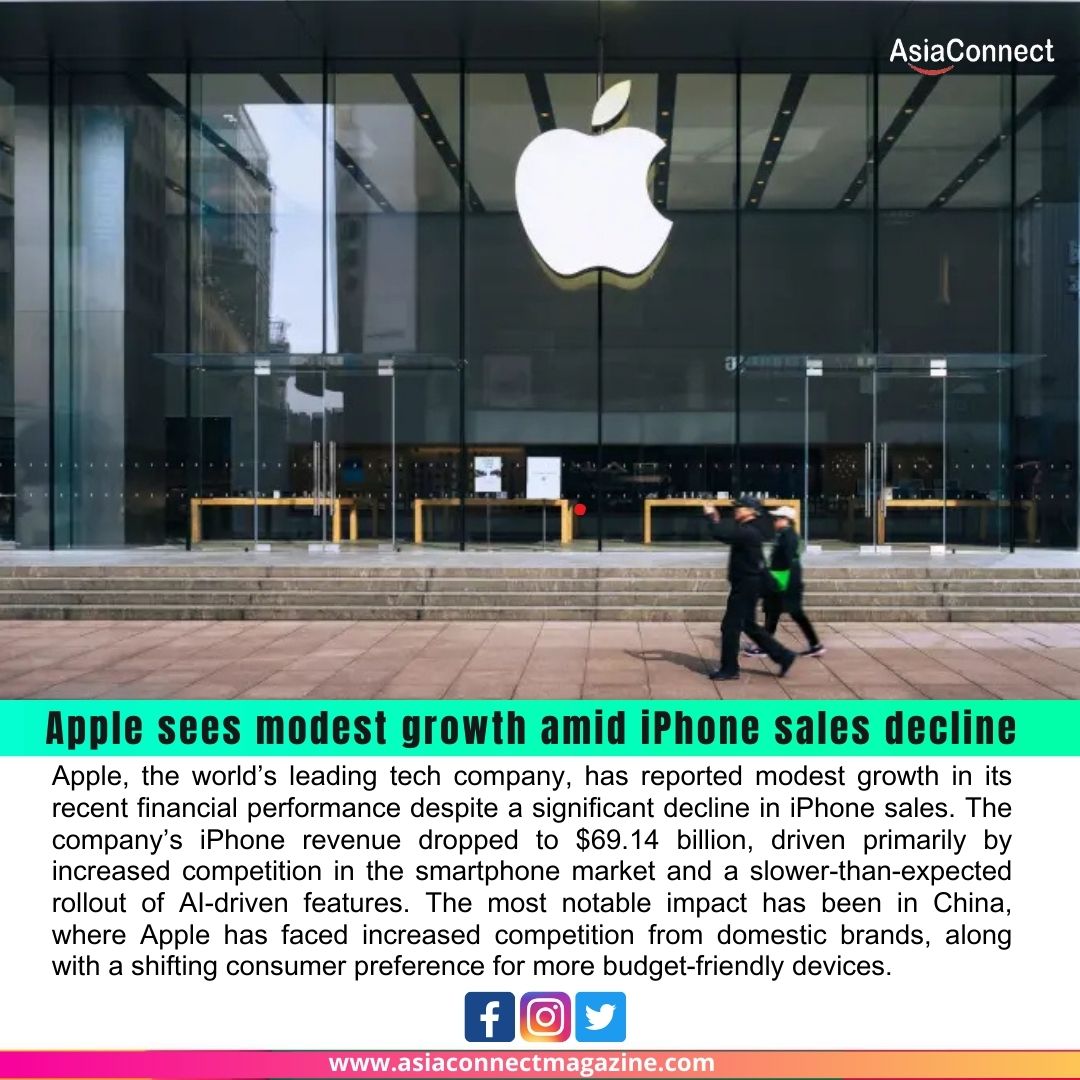Apple, the world’s leading tech company, has reported modest growth in its recent financial performance despite a significant decline in iPhone sales. The company’s iPhone revenue dropped to $69.14 billion, driven primarily by increased competition in the smartphone market and a slower-than-expected rollout of AI-driven features. The most notable impact has been in China, where Apple has faced increased competition from domestic brands, along with a shifting consumer preference for more budget-friendly devices.
iPhone Sales Decline: The Impact of Growing Competition
The primary driver behind Apple’s iPhone revenue drop has been intensified competition from both established brands like Samsung and newer entrants in the market. Chinese smartphone makers such as Xiaomi, Oppo, and Vivo have gained significant market share by offering high-performance devices at lower price points. These competitors have made it difficult for Apple to maintain its dominance, especially in price-sensitive markets like China, where Apple’s premium pricing strategy has faced pushback.
In addition to this, global smartphone sales have stagnated, and consumers are holding onto their devices for longer periods before upgrading. The saturation of the smartphone market, especially in developed regions, has slowed the growth of iPhone sales, making it more challenging for Apple to achieve the same levels of revenue growth it once enjoyed in the past.
AI Feature Rollout: A Slower Pace Dampens Innovation Perception
Apple’s move towards integrating AI features into its devices has been seen as an essential strategy for staying competitive in the smartphone market. However, the rollout of these AI features has been slower than expected, leaving Apple playing catch-up with its competitors, particularly with Chinese brands, which have been more aggressive in incorporating AI and machine learning into their devices.
For instance, companies like Huawei and Xiaomi have already introduced advanced AI capabilities in their smartphones, such as facial recognition and AI-powered photography enhancements, which have helped them stand out in the competitive market. Apple, on the other hand, has struggled to innovate at a similar pace, which has affected its ability to maintain consumer interest and excitement around new iPhone releases.
Challenges in the Chinese Market: A Critical Battleground for Growth
China, once a stronghold for Apple’s iPhone sales, has seen a decline in revenue from the region. The country’s growing preference for local smartphone brands, which offer comparable technology at lower prices, has hurt Apple’s position. Additionally, the increasing focus on domestic innovation in China, combined with growing concerns over data privacy and national security, has made it more challenging for foreign tech companies like Apple to maintain their market share.
The launch of the iPhone 15 series, which included several new features aimed at enhancing the user experience, did little to reverse the decline in Chinese sales. Chinese consumers are now more inclined to purchase local devices, which are not only more affordable but also offer features tailored to the preferences and needs of the local market.
Apple’s Strategy Moving Forward: Diversification and Services Focus
Despite the challenges, Apple remains optimistic about its future growth. The company is focusing more on diversifying its revenue streams, particularly through its growing services business, which includes offerings like Apple TV+, iCloud, and the App Store. These services now generate significant revenue for Apple and help offset the decline in iPhone sales.
In addition, Apple’s push into wearables, including the Apple Watch and AirPods, has shown strong growth. These products have been embraced by consumers and are expected to continue to contribute significantly to the company’s overall revenue.
Conclusion: Apple’s Path Forward Amid Declining iPhone Sales
Apple’s modest growth in the face of iPhone sales decline reflects the growing challenges it faces in a competitive market. The company’s ability to navigate these challenges will depend on its ability to innovate quickly, particularly in AI and machine learning, and continue its strong push in services and wearables. As competition continues to intensify, Apple’s focus on diversification and its ability to cater to evolving consumer needs will be key to maintaining its position as a global tech leader.





